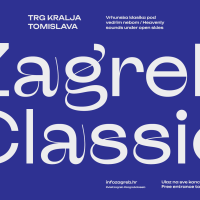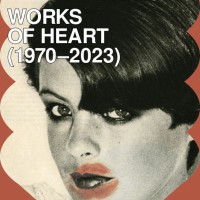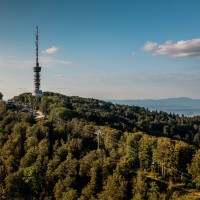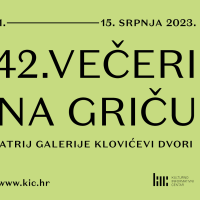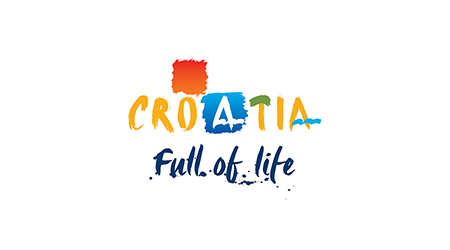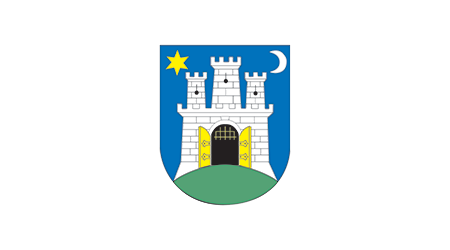Lauba – People and Art House
In just several months, Zagreb has acquired three new private museums, the most recent of which, Lauba – People and Art House, opened in mid-June. This newest museum represents a unique concept of contemporary art and urban content.
 Zagreb’s newest museum opened in mid-June in the space of the former riding arena from the times of Austro-Hungarian rule, located in Črnomerec (western Zagreb). The museum has been named Lauba – People and Art House, and it represents a very valuable and unique modern concept, which unites art and socialization. The word “lauba” is a local name used in the Vrbovec area to denote a circular row of trees, and it probably originates from the German word “laub”, meaning “leaf”. The addition to the title, “People and Art House” originates from the concept that unifies the exhibition as well as other contents.
Zagreb’s newest museum opened in mid-June in the space of the former riding arena from the times of Austro-Hungarian rule, located in Črnomerec (western Zagreb). The museum has been named Lauba – People and Art House, and it represents a very valuable and unique modern concept, which unites art and socialization. The word “lauba” is a local name used in the Vrbovec area to denote a circular row of trees, and it probably originates from the German word “laub”, meaning “leaf”. The addition to the title, “People and Art House” originates from the concept that unifies the exhibition as well as other contents.
Modelled on contemporary museums across the world, Lauba has a café bar for socializing and numerous business interaction areas. The exhibition area spreads over 1300 square meters, and, during the course of the coming year, it will feature more than 300 works by renowned Croatian contemporary artists. The exhibit unites several forms of artistic expression: sculptures and paintings, as well as original and conceptual works of design.
This is a large private project by the Zagreb-based company Filip Trade, whose owner has been gathering the collection that will be, to a large extent, exhibited in the museum. His entire collection today numbers around 500 works by renowned Croatian artists, created between the 1950’s and present. Some of the masterpieces “belong” to certain key groups from Croatian art history, such as works by the ‘Exata 51’ group, ‘New Tendencies’ or the ‘Gorgona’ group. The oldest piece featured in the collection, Ivan Kožarić’s statue “Bara with a Hen”, dates from 1949. However, over the past several years, the collection’s owner has focused on current production, and artists of younger and middle generations.
Just before the opening of the museum the collection was also enriched by restored works, including Lovro Artuković’s painting “The signing of the declaration the unification of Western Herzegovina and Popovo Polje with the Republic of Croatia (Wer hat das Bier bestellt?!)”, which is also the largest in the collection at 280x480 centimetres. Visitors will also have an opportunity to see Artuković’s piece “Apolon and Marsija (A Triumph of New Media over Painting), which has never before been on show to the public.
Throughout the first year of operation, the museum will feature more sequences from the so-called Volatile Setup, which consists of works from the holdings of the Filip Trade collection. Concurrently with each sequence, there will also be parallel exhibitions as well as various events, which will shape the interactive Lauba programme.
Published: 04.07.2011
 Hrvatski
Hrvatski English
English Deutsch
Deutsch Spanish
Spanish French
French Italian
Italian Russian
Russian Korean
Korean Japanese
Japanese Chinese
Chinese Zagreb’s newest museum opened in mid-June in the space of the former riding arena from the times of Austro-Hungarian rule, located in Črnomerec (western Zagreb). The museum has been named Lauba – People and Art House, and it represents a very valuable and unique modern concept, which unites art and socialization. The word “lauba” is a local name used in the Vrbovec area to denote a circular row of trees, and it probably originates from the German word “laub”, meaning “leaf”. The addition to the title, “People and Art House” originates from the concept that unifies the exhibition as well as other contents.
Zagreb’s newest museum opened in mid-June in the space of the former riding arena from the times of Austro-Hungarian rule, located in Črnomerec (western Zagreb). The museum has been named Lauba – People and Art House, and it represents a very valuable and unique modern concept, which unites art and socialization. The word “lauba” is a local name used in the Vrbovec area to denote a circular row of trees, and it probably originates from the German word “laub”, meaning “leaf”. The addition to the title, “People and Art House” originates from the concept that unifies the exhibition as well as other contents.